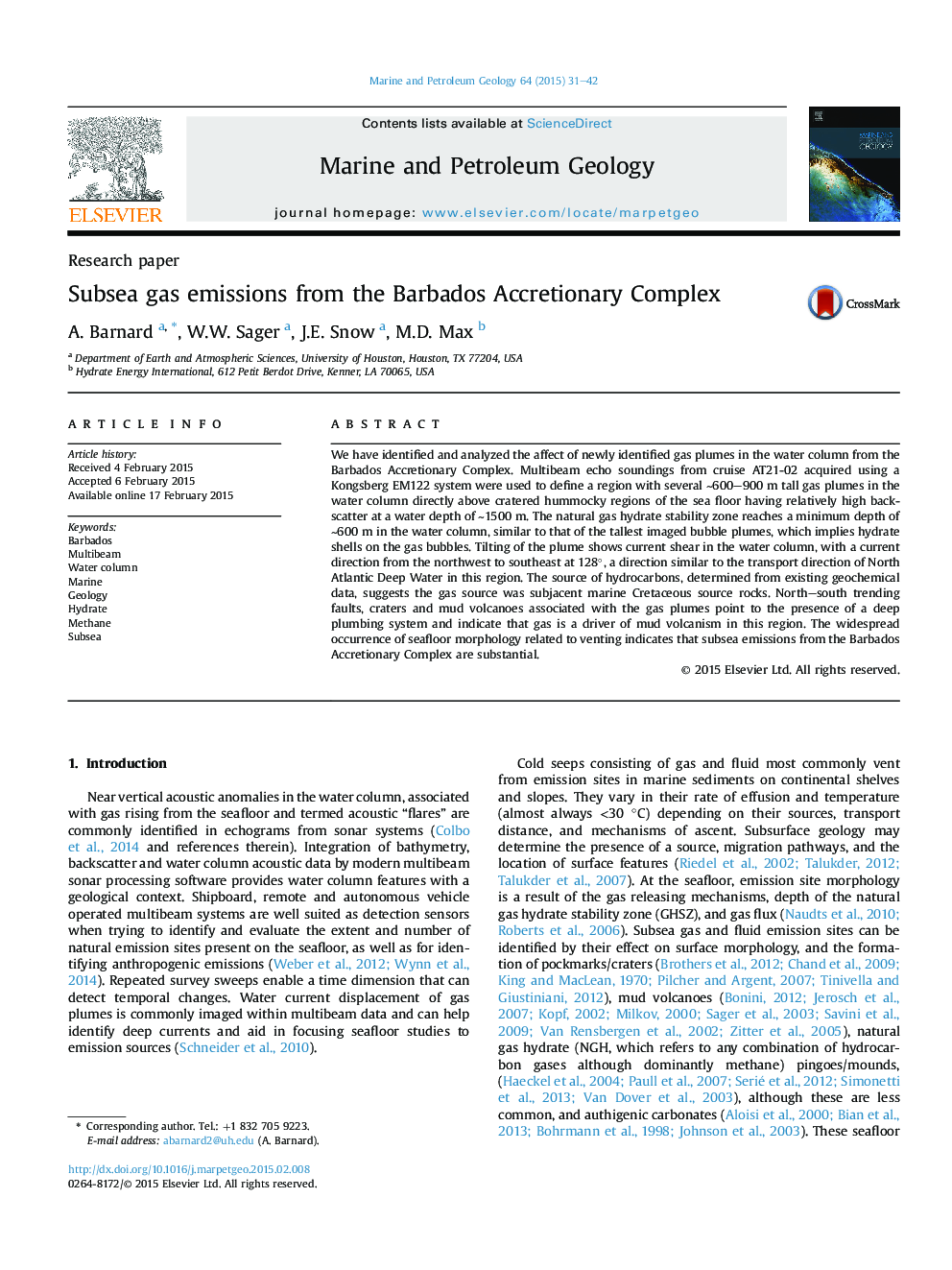| Article ID | Journal | Published Year | Pages | File Type |
|---|---|---|---|---|
| 6435139 | Marine and Petroleum Geology | 2015 | 12 Pages |
â¢We examine high-resolution multibeam data from the Barbados Accretionary Complex.â¢Tall 500-1000 m gas plumes have been identified in the water column.â¢Gas bubbles are armored from dissolution by hydrate during their ascent.â¢Spatial relationships of seafloor features indicate a gas driver for mud volcanism.
We have identified and analyzed the affect of newly identified gas plumes in the water column from the Barbados Accretionary Complex. Multibeam echo soundings from cruise AT21-02 acquired using a Kongsberg EM122 system were used to define a region with several â¼600-900 m tall gas plumes in the water column directly above cratered hummocky regions of the sea floor having relatively high backscatter at a water depth of â¼1500 m. The natural gas hydrate stability zone reaches a minimum depth of â¼600 m in the water column, similar to that of the tallest imaged bubble plumes, which implies hydrate shells on the gas bubbles. Tilting of the plume shows current shear in the water column, with a current direction from the northwest to southeast at 128°, a direction similar to the transport direction of North Atlantic Deep Water in this region. The source of hydrocarbons, determined from existing geochemical data, suggests the gas source was subjacent marine Cretaceous source rocks. North-south trending faults, craters and mud volcanoes associated with the gas plumes point to the presence of a deep plumbing system and indicate that gas is a driver of mud volcanism in this region. The widespread occurrence of seafloor morphology related to venting indicates that subsea emissions from the Barbados Accretionary Complex are substantial.
